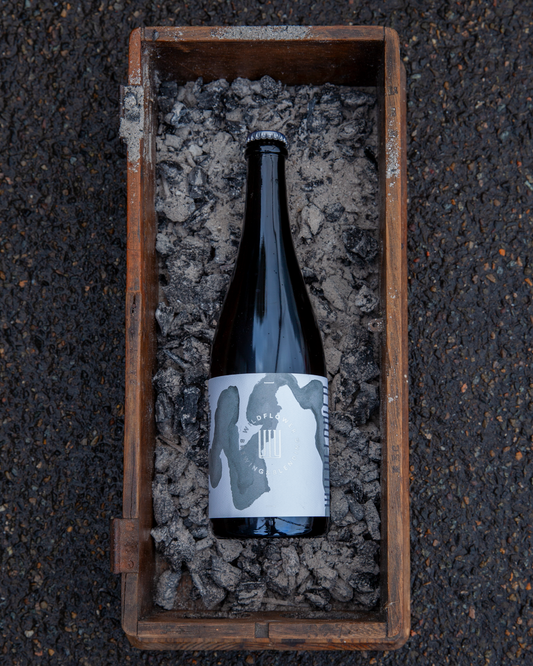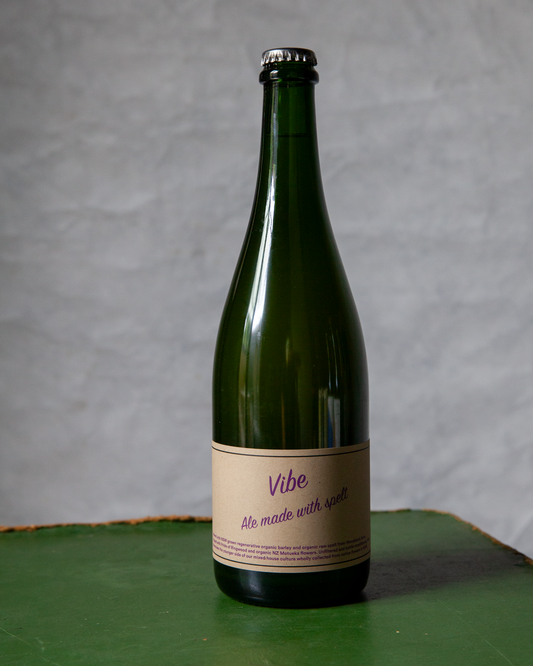“It's the wild west my friend, but it's a lot of fun when you get to know a culture and work together with it.”
A friend of mine said this to me earlier this year when we were troubleshooting some strange flavours my culture was showing. The odd smells went away with time but what he said has stuck with me.
——————
I captured my first wild yeast in the spring of 2014. I was down on the South Coast of New South Wales and decided to give it a shot. I made a 20 litre batch of wort and hopped it ever so slightly. I knocked out about 12 litres into 12 separate sanitised glass growler jugs and left the other 8 litres in the kettle to cool overnight and spontaneously inoculate. My wife and I then went for a hike and took cuttings of anything colourful that we could find. We then sorted them out and put red things in one grower, yellow in another, a mix in that one and a thistle in another. We had 12 glass growlers with all sorts of plant life stuffed into them with air locks on top. The next morning we put the last 8 litres from the kettle the day before into a few growlers and sealed them up too. We let them sit for about 4 weeks and then I apprehensively realised that I needed to taste all of these one by one to figure out which captures had been successful. I was right to be hesitant, there were some really weird things happening in some of these growlers. Like, bad stuff. However, a few of them (read 3) were actually drinkable… I wish I could remember which ones. I decanted the yeast slurry off of the good captures and threw everything else out. I made a beer with those yeasts and it turned out… alright. But to be honest I can’t count all the mistakes I made in those first captures.
If that's a little too technical for you let me boil down what I did. I intentionally infected a batch of perfectly fine homebrew and then decided drink it.
That experience was, to a large extent, a failure but because it wasn’t a 100% bust, a door opened. I latched onto that little tiny sliver of success I got in making a semi-drinkable beer and decided if pre-industrial brewers could do it, then so could I.
Before the isolation of the first pure strain of lager yeast at Carlsberg brewery in the late 1800s, all brewers made beer with multiple strains of yeasts rather than a single strain. They had honed their practice over the years and developed a ‘culture’ (mixture of yeasts) that they could use over and over again with success and varying amounts of predictability. However, these were still mixed cultures, ie containing more than a single strain, whereas after isolation techniques were learned the overwhelming majority of brewers switched to making beers with a monoculture of yeast (pure, single strain fermentations). That switch was a turning point for beer manufacturing eliminating much of the uncertainty and variability in their product.
However, it was also noted at the time that pure culture fermentations were leaving us beer with less character than before. These early mixed cultures inevitably contained more in them than just pure brewers yeast (saccharomyces), they were also laden with other organisms such as brettanomyces, lactobacillus and pediococcus. The proportional mixtures of these varying wild organisms in a brewery’s house culture made unique products from each producer even if they were nearby.
Post-industrialisation, these wild ‘other’ organisms were banished from the brewing world, simply called beer spoilers. That’s partly true, if you were to introduce a mixed culture to an otherwise ‘clean beer’, it would most certainly alter the flavour of the finished product probably not for the better. Most of that, though, has to do with the fact that making a monoculture beer differs from making a beer with a monoculture. They require a seperate set of equipment, skills and personal characteristics. But more on that later...
You won’t find the mixture of yeasts that makes all of the beers at Wildflower anywhere else. You can’t buy it, a lab doesn’t propagate it for me and I’m pretty sure I couldn’t even replicate it. I developed the house culture by wrangling yeast from New South Wales over the course of 2016. While the methods to do this resemble that first attempt of mine, I’d learned a lot in the years between (see the intro post). The wild yeasts and bacterias in our culture come from plants and spontaneous batches of beer made around the state. My capturing technique is a little more honed than it was in the past and I hope to go more into that in a separate post. As the brewery grows, we will add more successful wild captures to the culture. Our house mixed culture will drift, with the season, batch by batch and as we add more to it. It’s part of the process and we choose to embrace it. Like what my friend said to me, this is part of the process of us (me and my culture) getting to know one another how each other reacts to different circumstances and how we work together.
Our malt is also entirely a product of the state. We feel so lucky to be able to source beautiful malt from our friends at Provenance Single Origin Malt from Moree and the Liverpool Plains as well as Voyager Craft Malt in the Riverina. We don’t know of any commercial hop producers in New South Wales yet, but eagerly await when we can bring this on too.
Worldwide now, there are a handful of breweries rediscovering how to make beer using a diversity of yeasts, including wild yeast rather than using a monoculture. Using mixed culture beers takes a certain amount of submissiveness to mother nature and her curious ways. Opposite to single strain pure yeast fermentations, mixed cultures are prone to behave unpredictably and take a great deal of patience from the brewer. These inconsistencies and time requirements pose distinct risks for any business. We feel, however, that the transformation of flavour and abundant harvest of esters mixed fermentations produce a character absent in pure yeast brewing.
So we are going to jump in the deep end. 100% mixed culture brewing from day one. We will focus our efforts into preparing good conditions for our yeast using New South Wales ingredients and then through the wonder of fermentation let them express themselves. We are going to intentionally ‘infect’ our beers with native yeast. We’ll keep watch alongside them, tasting them often and letting them decide when they are ready. When that window opens to us and they are ready we will do everything we can to be gentle and make sure we see that same expression in the bottle.
best,
topher



